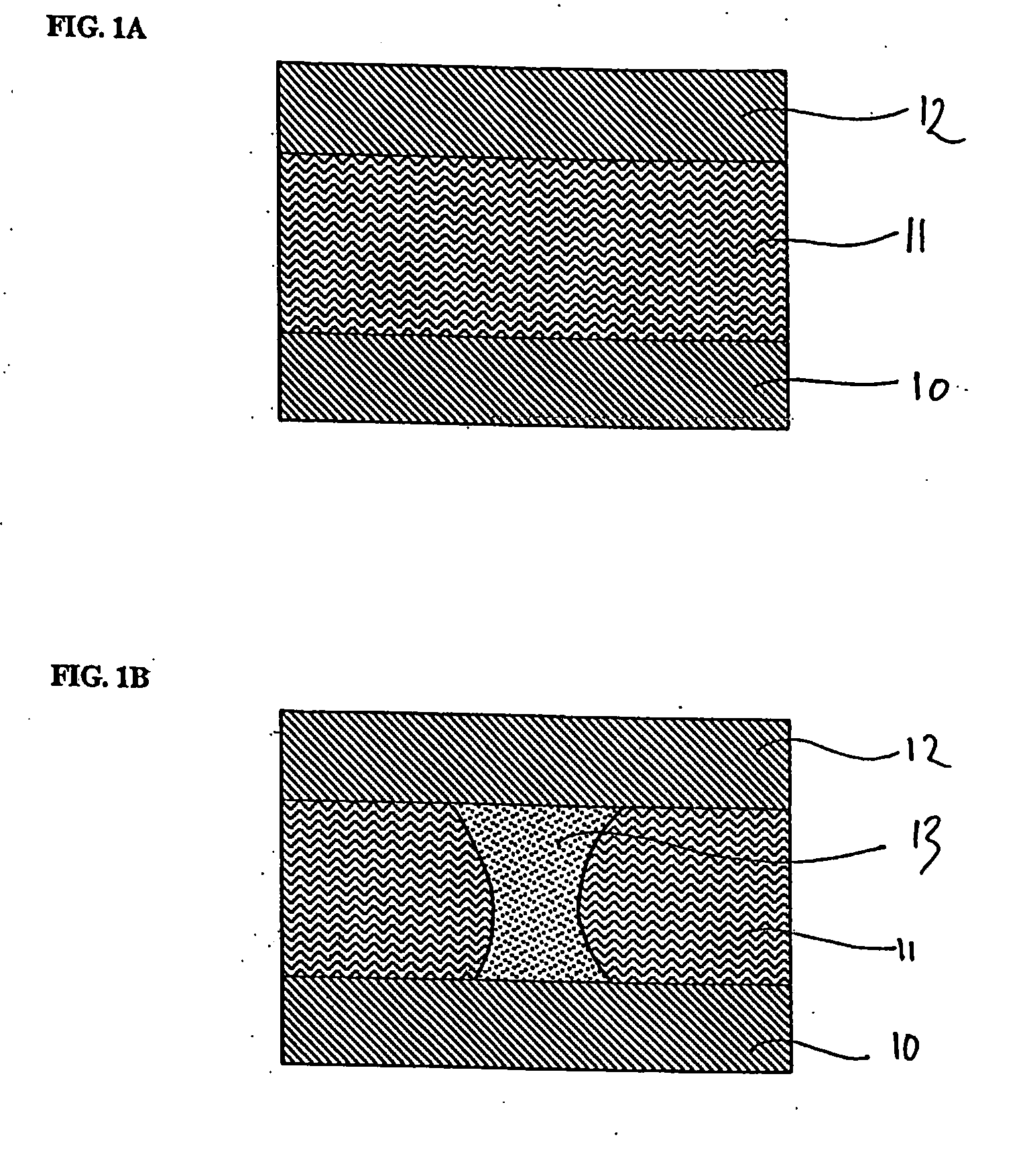Resistive memory device
a memory cell and resistive technology, applied in the direction of negative resistance effect devices, semiconductor devices, bulk negative resistance devices, etc., can solve the problems of increasing the limits of conventional electronic data memories, such as dynamic random access memory (dram) or flash memory, to meet modern requirements, require substantial energy, and provide limited endurance, so as to improve the method of fabricating a programmable resistive memory cell. , the effect of improving the programmable resistive memory cell
- Summary
- Abstract
- Description
- Claims
- Application Information
AI Technical Summary
Benefits of technology
Problems solved by technology
Method used
Image
Examples
first embodiment
[0028]FIG. 2C shows a schematic plot of the temperature-dependent resistance of a combination of two transition metal oxides, for example, nickel oxide and cobalt oxide, according to the present invention. Therein, a programmable resistance layer comprises two transition metal oxides, TMO1 and TMO2, in an atomic / molecular ratio
MR=TMO1 / (TMO1+TMO2), (2)
wherein TMO1 and TMO2 denote the respective atomic content of the first and second transition metal oxide. The ratio MR, as defined by (2), may determine both the initial electrical resistance and the temperature-dependence of the electrical resistance of the combined oxide layer. The ratio MR may be set reliably and reproducibly during deposition, for example, during sputtering, by varying the corresponding sputtering rates. In addition, the ratio MR may then be stably maintained in the programmable resistance layer even without the need for diffusion barriers or other measures. Using corresponding transition metal oxides, both the i...
second embodiment
[0029]FIGS. 3A through 3C show a schematic view of a resistive memory cell in different stages during fabrication according to the present invention. As shown in FIG. 3A, first, a lower electrode 10 is provided. As shown in FIG. 3B, a programmable resistive layer 11 is provided on the lower electrode 10, for example, by means of reactive co-sputtering. During sputtering, a DC, MF or RF plasma excitation may be effected, in order to sputter a solid element or oxide target. Therein, at least two transition metals, a first transition metal 101 and a second transition metal 102, are sputtered. In the case of sputtering elementary transition metals, the process atmosphere during formation of the programmable resistance layer 11 comprises oxygen 100 for forming the corresponding oxides 110, 120. As shown, the process atmosphere comprises at least so much oxygen 100 that the sputtered transition metals 101 and 102 may oxidize in their respective highest degree of oxidation and thus form a ...
third embodiment
[0032]FIGS. 4A through 4H show a schematic view of a resistive memory cell in different stages during fabrication according to the present invention. First, as shown in FIG. 4A, a substrate 40 is provided. As shown in FIG. 4B, a trench 400 is formed in the substrate 40. The substrate 40 may include a silicon substrate or other already structured functional elements—as is usual in semiconductor manufacturing. The trench 400 in the substrate 40 serves for forming a lower electrode 41, as shown in FIG. 4C. In the case of a insulating or semi-insulating substrate 40, a plurality of lower electrodes 41 or also conductive tracks may be arranged side-by-side for contacting a plurality of resistive memory cells, wherein the contacts or tracks are electrically isolated from each other.
[0033]The surface of the lower electrode 41 and of the substrate 40 may be polished, e. g. by means of chemical mechanical polishing, for the provision of a planar surface for the following process stages.
[0034...
PUM
 Login to View More
Login to View More Abstract
Description
Claims
Application Information
 Login to View More
Login to View More - R&D
- Intellectual Property
- Life Sciences
- Materials
- Tech Scout
- Unparalleled Data Quality
- Higher Quality Content
- 60% Fewer Hallucinations
Browse by: Latest US Patents, China's latest patents, Technical Efficacy Thesaurus, Application Domain, Technology Topic, Popular Technical Reports.
© 2025 PatSnap. All rights reserved.Legal|Privacy policy|Modern Slavery Act Transparency Statement|Sitemap|About US| Contact US: help@patsnap.com



